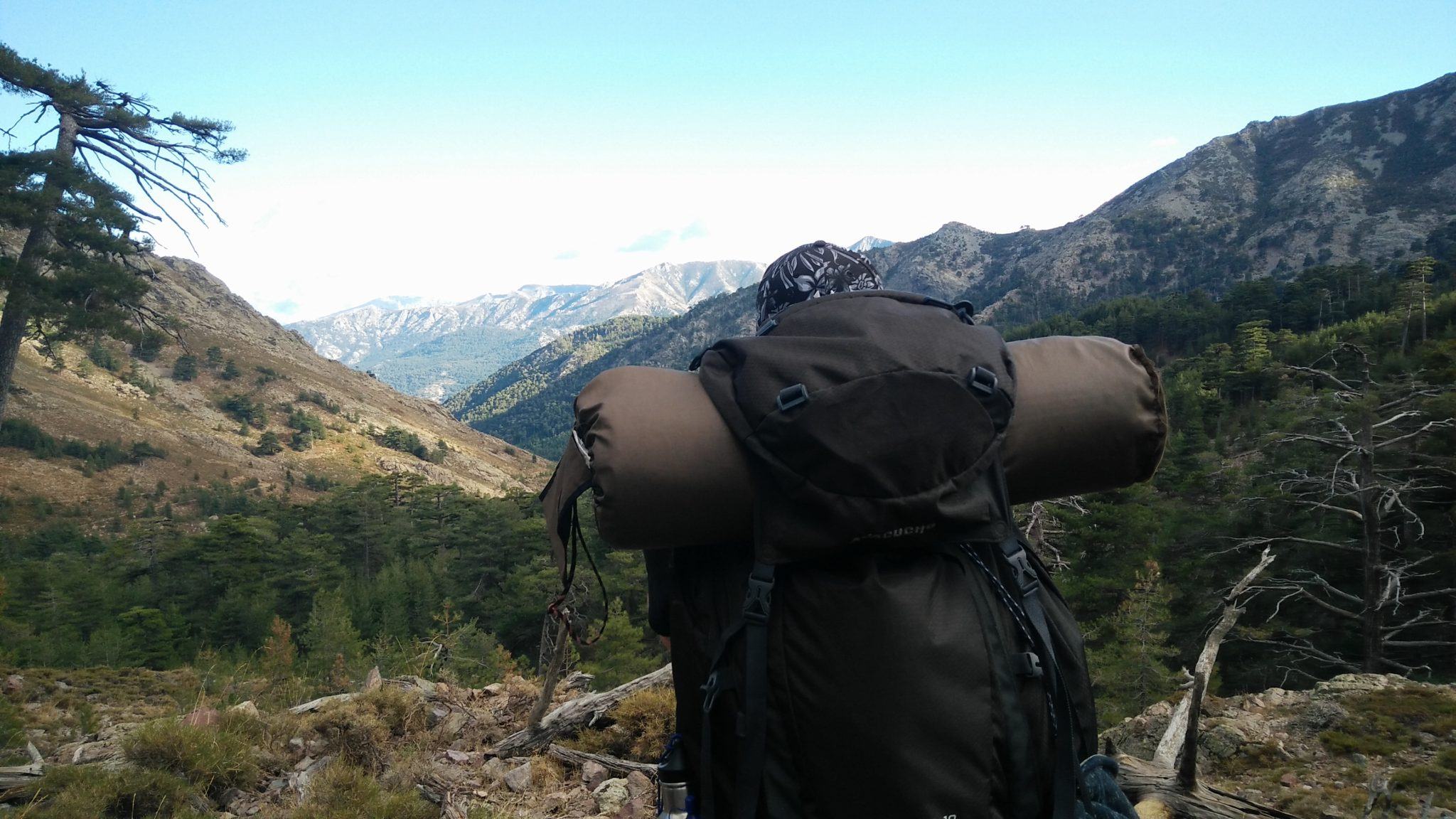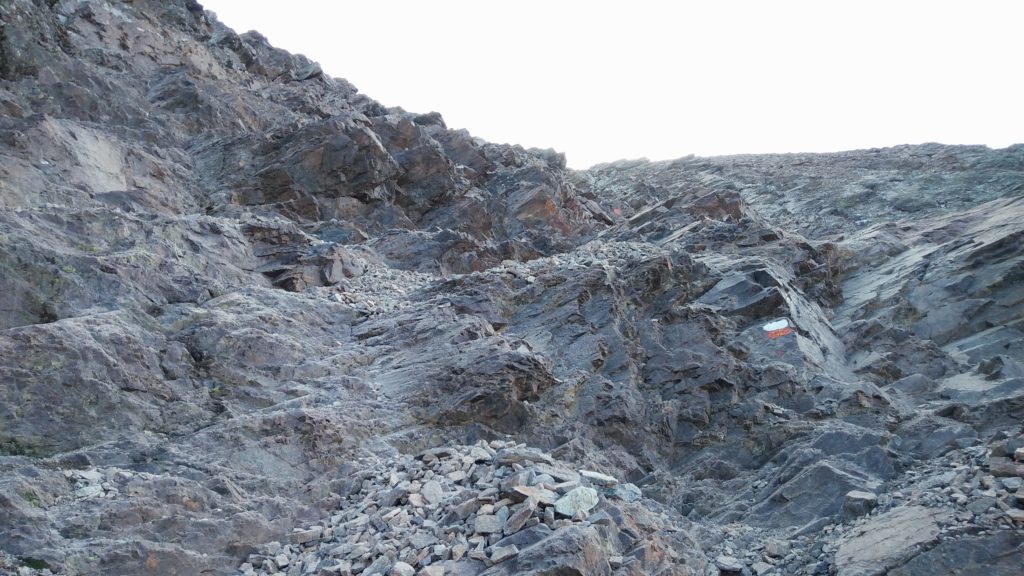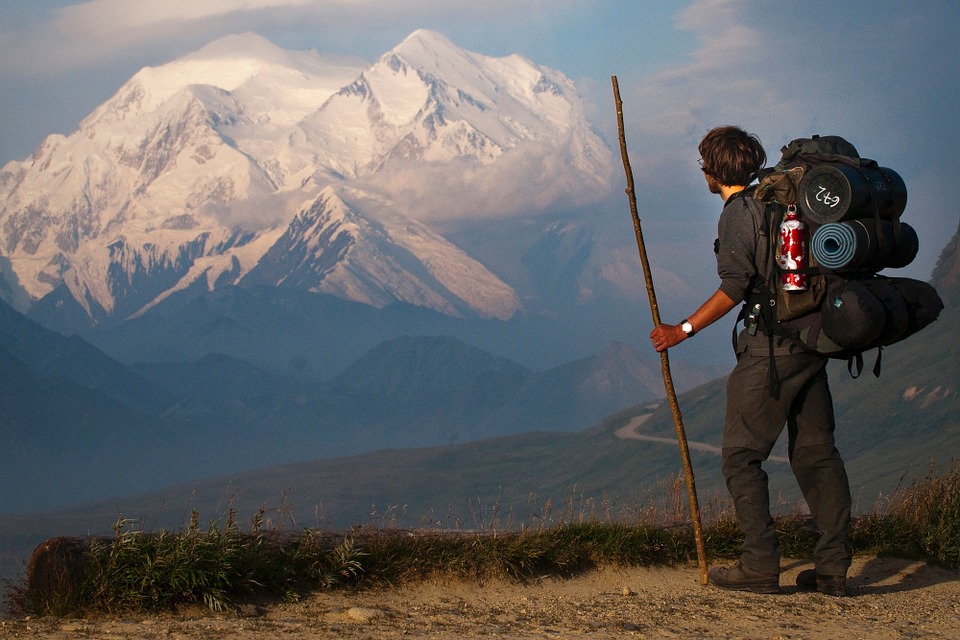What is backpack weight distribution? So, you bought the right gear, you left the trivial items out of your selection. The only thing that’s left is to actually pack your bag. Not a big deal right? Open the bag, put gear in the bag, close the bag, done. Well, it’s a little more than that. Backpack weight distribution is extremely important for balancing, saving energy, stabilizing and even preventing injury and complaints.

Backpack weight distribution is nothing more than a fancy term for “where goes what in my backpack”. The general idea is to pack the heavy items as close to your back as possible and at the height of the shoulder blades. By doing this the weight is placed on the hips, which is what we want.
Know your type of backpack
There is a lot of misleading information out there on backpack weight distribution. A different type of pack can have a different optimal packing strategy. The two main types are internal and external frame packs.
When using an internal pack, the heaviest items should be packed at the center, and when using an external pack the heaviest items should be packed on top. In any situation you want the heaviest items to be as close as possible to your back. Not sure what kind of backpack you have? Most backpacks have internal frames, if you would use an external frame, you would probably know it.
Not sure how to spot an external frame? Here is an example:

Know your terrain

There are some general rules that apply on any kind of terrain. However, hiking in a different terrain could mean you should adjust your backpack weight distribution strategy just a bit.
If you are hiking on a flat surface you might be able to get away with putting some heavier items at the top of your backpack. When you are going to do actual climbing you definitely don’t want any heavier items at the top.
The main reason is because this would lead to poor stability, which doesn’t matter that much on a flat surface, but could be dangerous on rougher terrain.
Saving energy and improve stability
Having trouble understanding how backpack weight distribution can save you energy? I don’t want to get too technical in this article, but try to think about the physics behind how a lever works. By packing the heavier items as close to our center, we need to use less energy to carry it with us. At the same time this will also increase stability.
This is not that important when you are walking on a flat surface, but once you have to do some climbing you will feel the difference immediately. Keep this information in the back of your mind. If you’re hiking on a plain surface you can move the heavy items a bit higher, so more weight gets carried by your hips.
If you are hiking on rough terrain you want to lower the heavy items a bit, especially when you have to do some climbing. By doing this, you will increase stability on this kind of terrain. If you are climbing and there are too many heavy items on top, you are in danger of falling backwards, lowering the heavy items will decrease this risk.
Try to spread out the medium weight items around the heavy items and try to fill the lowest part of your bag with the lightweight stuff.
Balancing your backpack
We have talked about stability in terms of the risk of falling backwards and forwards. But you should also think about a correct left/right balance. Think about using your backpack’s side bags in particular, putting a one liter water container on either side will do the trick.
Alright, this might seem pretty obvious, but I had to cover this if I was going to write an article about weight distribution.
Practical information
Now we understand why weight distribution is so important and where the heavy items should go, but how do we handle this practically? Well this really depends on your situation, what kind of terrain will you encounter, what kind of pack do you have, what gear are you bringing, etc.
However, a general rule is to start with your sleeping bag. It is a voluminous light item and you don’t need access to it throughout the day. It is perfect to put at the very bottom of your bag.
Next up sort your gear in different categories: light, medium and heavy. Also, think about how often you will have to use this item, it is not very convenient to put your water container at the very bottom of your pack.
Try to divide your backpack in zones, the heavyweight zone, medium weight zone and the lightweight zone and consider those your guidelines. If there is a heavyweight item that you are going to use a lot throughout the day you can consider making an exception and just put it in a convenient place.
Backpack weight distribution tips
Try to think about how you organize your gear within your backpack. Check every morning whether or not your gear is still in the right place. You can play around a little bit, see what ratio works best for you on different terrains.
Be as efficient as you can with the room inside your pack, often people think their bag is full, but in reality there is plenty of room left, they just can’t see it. For example: you can stuff clothes in a pot or put small food bars in the small open spaces in your pack. Try to fill up all empty space as good as possible. For more tips on how you can save room inside your backpack, check out this article: Backpacker tips: How to Save Room in Your Backpack.
The more you carry, the more distributing weight becomes important. However, even for smaller bags you can apply these rules. It is not a lot of work to apply these and it can make your life a bit more comfortable.
Another great thing to do is to put all your gear/clothes inside dry bags. Not only will this ensure that your gear/clothes stay dry, it can also help you with keeping a clear overview. For more information about dry bags I would recommend this article: Best dry bags for hiking. This article will not only explain why dry bags are great for hiking, there will also be a list of the best dry bags included.
Attaching gear externally

We want to avoid to attaching gear externally as best as we can because it would move more weight away from our center. However, sometimes it is really hard to put everything inside our bag, so we can’t always get around this. If we have to attach something to our bag it is mostly better to attach it at the top.
I would only consider attaching lightweight items on the bottom. If you are going to attach items try to attach lightweight, voluminous, durable items, like a sleeping pad. Also, you might want to attach items externally that simply don’t fit in your backpack, like an ice axe.
For more information about attaching gear externally I would recommend the following article: Backpacking External Attachment Guide.
Example of correct backpack weight distribution
I have talked a lot about the theory behind backpack weight distribution in this article. But I feel like it would be very valuable to show you guys an actual example of packing a backpack the right weight. Therefore I did some research and found a pretty good video example:
One thing I would like to mention, he uses trash compactor bags to waterproof his gear. This is not a bad approach, especially if you are on a very tight budget. However, I would still recommend to use dry bags instead. Not only are these even more durable (and also not very expensive), they will also help to keep the overview in your backpack (especially if you buy them in different colors).
Conclusion
Thinking about backpack weight distribution can make a major difference on the trail. It will eventually save you a lot of energy and it will help with stability. Saving energy is obviously always important. Having optimal stability will become more important on difficult terrain. Especially when there is some climbing/scrambling involved.
Think about the general rule: heavyweight items as close to your back as possible and at shoulder blade height. Lighter items should go at the bottom and medium weight items should go at the top. It’s as simple as that. Make sure to check your backpack every morning and see if these rules still apply.
Keep in mind that, even if you perfectly distribute the weight inside your backpack, you should still try to keep the weight of your backpack as low as possible. I’ve seen a lot of beginners make these mistakes. Not only do they throw in everything randomly in their backpack (not caring about backpack weight distribution at all). They also simply pack way more than they actually need. I even mentioned both of these mistakes in my other article: 8 mistakes you will make on your first hike. Talking about hiking mistakes, always make sure to bring proper hiking shoes or trail runners.
Still looking for a good hiking backpack? Take a look at my other article in which I list some of the best hiking backpacks.